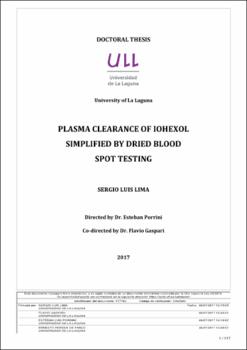Plasma clearance of iohexol simplified by dried blood spot testing.
Author
Luis Lima, SergioDate
2017Abstract
Renal function can be estimated with formulas, which are inaccurate, or measured with gold standard methods, which are reliable but unpractical. We propose to simplify the plasma clearance of iohexol, a gold standard method to measure renal function, measuring iohexol in dried blood spot samples (DBS).
Methods: We compared GFR values assessed by DBS and the reference plasma analysis technique. We tested “in-vitro” the agreement between non-volumetric and volumetric DBS with the reference technique. Then, we performed a clinical validation “in-vivo” between volumetric-DBS and plasma analysis in 203 patients. The agreement was evaluated with the Concordance Correlation Coefficient (CCC) the Total Deviation Index (TDI) and the coverage probability (cp). We defined acceptable agreement as a TDI<10%.
Results: Studies “in-vitro”: The non-volumetric DBS showed moderate agreement: TDI=26.03%, while the volumetric-method showed acceptable agreement TDI=13.01%, with the reference method in plasma. The non-volumetric DBS was rejected. To improve the agreement of the volumetric DBS, iopamidol was used as an internal standard. This method showed excellent agreement: TDI=9.03% with the analysis in plasma and was selected as the definitive DBS method. Studies “in vivo”: The agreement between the final DBS method and the reference technique was excellent: TDI=9.53%. This indicates that 90% of the GFR values ranged from -9.5 to +9.5% compared with the reference method.
Conclusions: We simplified the plasma clearance of iohexol using DBS without losing accuracy and precision with respect the reference technique. This may facilitate the use of a reliable determination of renal function to the medical community.





